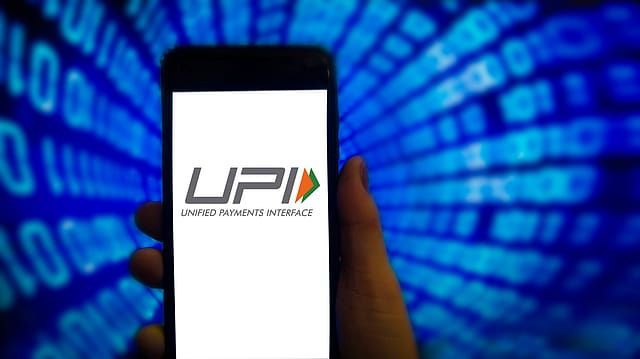UPI clocks 6.5 billion transactions in August
ADVERTISEMENT

India's Unified Payments Interface (UPI) recorded 6.57 billion transactions in August, valuing ₹10.72 lakh crore, according to data released by the National Payments Corporation of India (NPCI).
In terms of volume and value, UPI transactions in August have been the highest ever on the platform since its launch in 2016.
The month of July saw 6.28 billion transactions with a total value of ₹10.62 lakh crore.
While UPI has become the go-to mode for real-time payments, a discussion paper floated by the Reserve bank of India last month proposed a tiered charge framework for UPI payments. The paper also proposed replacing the zero-charge framework for UPI transactions with a subsidy.
The government, however, clarified that it will not impose any charges on UPI transactions as concerns of service providers for cost recovery have to be met through other means.
"UPI is a digital public good with immense convenience for the public & productivity gains for the economy. There is no consideration in Govt to levy any charges for UPI services. The concerns of the service providers for cost recovery have to be met through other means," the Ministry of Finance had said.
January 2026
Netflix, which has been in India for a decade, has successfully struck a balance between high-class premium content and pricing that attracts a range of customers. Find out how the U.S. streaming giant evolved in India, plus an exclusive interview with CEO Ted Sarandos. Also read about the Best Investments for 2026, and how rising growth and easing inflation will come in handy for finance minister Nirmala Sitharaman as she prepares Budget 2026.
Meanwhile, instant money transfer platform IMPS clocked transactions worth ₹4.45 lakh crore in August, aided by 46.69 crore transactions. In July, it stood at ₹4.45 lakh crore in value terms through a total of 46.08 crore transactions.
NETC FASTAG for automatic toll deduction at toll plazas witnessed transactions worth ₹4,245 crore in August, up from ₹4,162 crore in July.
NPCI's Aadhaar Enabled Payment System (AePS) was the only outlier, where transactions came down from ₹30,199 crore in July to ₹27,186 crore in August. The number of transactions too fell to 10.56 crore from 11 crore.
Platforms such as IMPS, RuPay, UPI, and NETC FASTAG are owned and operated by the National Payments Corporation of India (NPCI), which is a not-for-profit entity promoted by banks. RTGS and NEFT payment systems are owned and operated by the RBI.
Merchant payments using UPI do not require installation of costly infrastructure by merchants as UPI QR codes are used. The cost of merchant infrastructure for UPI is lower as compared to the cost incurred in a card-based acceptance infrastructure.
In its paper titled Charges in Payment Systems, the RBI had asked if UPI transactions are charged, should MDR for them be a percentage of transaction value or should a fixed amount irrespective of the transaction value be levied.
MDR is the rate charged to a merchant for payment processing services on various payment instruments. "If charges are introduced, should they be administered (say, by RBI) or be market determined?" the RBI discussion paper had asked.
"UPI as a funds transfer system is like IMPS. Therefore, it could be argued that the charges in UPI need to be similar to charges in IMPS for fund transfer transactions," the banking regulator had said.
